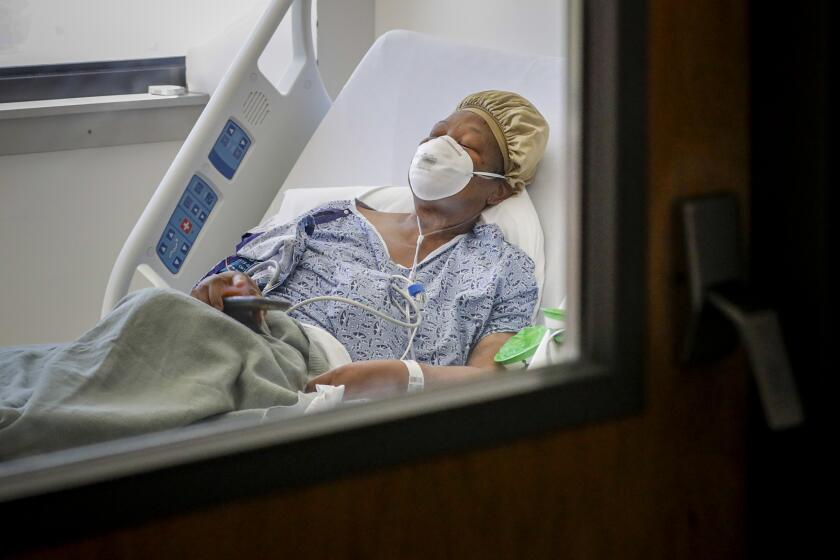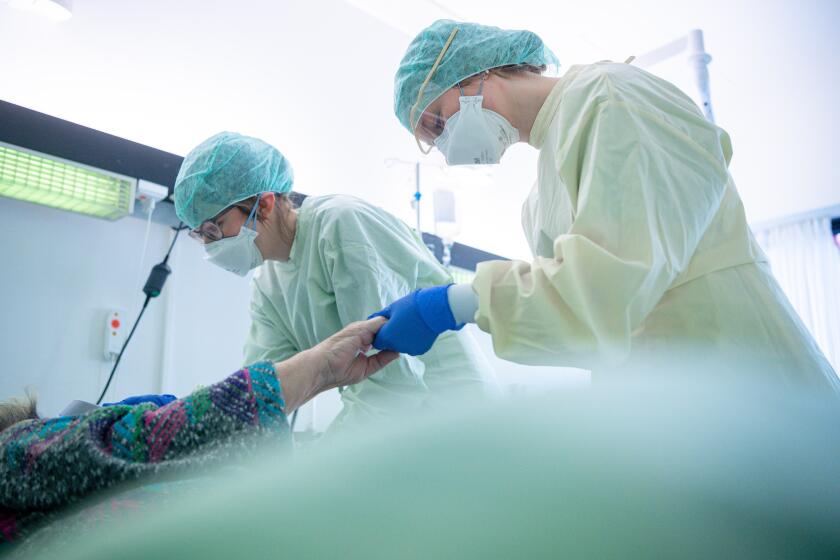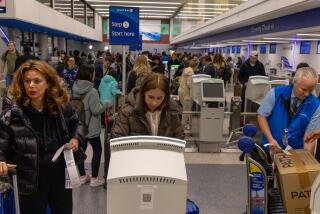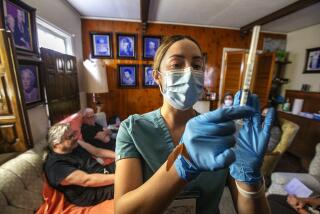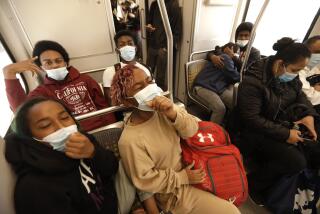The coronavirus entered Northern California many times, from many places
The novel coronavirus settled in Northern California in much the same way as the rest of the world: It arrived from places near and far, flourished in fertile pockets and incubated until it either died out or moved on to newer pastures.
An international team of scientists combined old-fashioned epidemiology with newfangled genetic sleuthing to determine that the Bay Area’s outbreak was spawned by a mix of foreign and domestic arrivals. The findings were published Monday in the journal Science.
In nine Bay Area counties where the coronavirus set down roots early, visitors arriving directly from China were only one of several sources of spread within the community. Strains of the virus that had come by way of Europe were also widely evident. And a cluster of cases that put down roots in Santa Clara County sent out tendrils to neighboring San Mateo County and the more distant Solano County.
But no single source of infection appears to have played a larger role in seeding the region’s coronavirus outbreak than the Grand Princess cruise ship, which sailed from San Francisco to Mexico and Hawaii twice in February and March.
The new study suggests that at least one passenger on the first of those two sailings — a person whose infection originated in Washington state — left behind enough virus to seed the infections of most of the dozens of people who became sick during the second sailing. Those passengers, in turn, carried the virus into San Francisco, Marin, Sonoma, Solano and San Joaquin counties, among other places elsewhere in the state and country, including Minnesota.
The analysis combines genetic sequencing of viral samples from 36 infected patients from throughout Northern California with data collected by public-health officials about how, when, where and by whom each person may have been infected and/or gone on to infect others. This technique, known as phylodynamic analysis, can be used to explore how a virus establishes beachheads in a new place and how widely and quickly it spreads out from there.
The coronavirus, known as SARS-CoV-2, mutates in barely perceptible ways as it expands its range. On average, it gains about two mutations a month.
Thanks to fast, inexpensive genetic sequencing technology, scientists can timestamp a seemingly random assortment of viral samples and arrange them into family trees to map their movements.
When the travel patterns gleaned by that process are compared to the exposure histories collected by public-health investigators, the result is a new way to recreate the outbreak’s spread.
Here’s what we can do about COVID-19’s racial inequality.
In this case, researchers chose to concentrate on nine counties surrounding San Francisco, which is both a magnet for domestic travelers and a prominent gateway from abroad. They focused on viral samples collected during a brief window of time near the start of the virus’s sustained spread inside the United States.
The results offer some insights into how quickly the virus had spread in the Bay Area before it penetrated inland and moved across the state.
The answer, according to the researchers: very quickly.
By mid-March, as testing became more widespread, both cases and deaths across the state began to rise sharply. In hard-hit San Mateo County, for instance, new cases spiked in early April.
Moreover, by February and early March, the virus had already spread enough from person to person on Northern California soil to have taken on the genetic timestamp of a domestic product.
Even as the virus spread, some local variants withered and died without seeding themselves further.
In San Benito and Solano counties, public-health interventions like contact tracing — possibly aided by lower population densities — stamped out local outbreaks before they could send embers to neighboring counties.
“The fact is, you can treat the virus as if it were a wildfire throwing off sparks,” said Dr. Charles Y. Chiu, an infectious disease specialist at UC San Francisco and the paper’s senior author. “If you’re prepared for them, you can basically put that wildfire out.”
They’re still helpful to see, Chiu said. At a cost of $10 to $20 per sample, the combination of genetic analysis and public health gumshoe work “has given us actionable data that could have kept the virus from spreading” beyond the boundaries of other counties, he added.
The coronavirus crisis has upended the status quo in all kinds of ways, and that includes how clinical trials are run.
The study benefited from a larger, international effort by many of the same researchers to decode, compare and track the genetic sequences of viral samples taken from patients across the world. By March 20, they had already gathered and organized 753 such genomes into family trees, allowing geneticists and public health specialists to see how the coronavirus outbreak became the COVID-19 pandemic.
Among the surprises they uncovered was the date that at least one traveler from New York had become infected. The traveler turned up sick in San Francisco on March 13 with a strain of virus that had clearly originated in Europe.
That timing suggests that a coronavirus that passed through Europe was well-established in New York by the time the first community-acquired case was identified there on March 3. An insight like that could not have been revealed with traditional forms of epidemiology.
